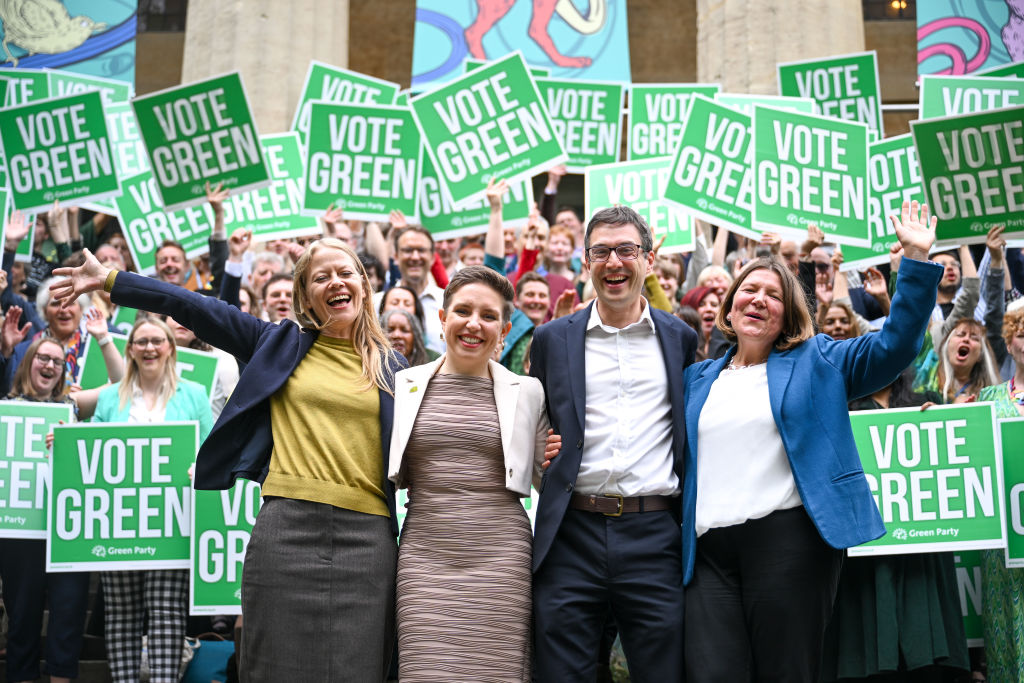Labour won 411 constituencies in the July 2024 election, enjoying its biggest national swing from the Conservatives since 1945. Nearly every Labour MP who stood for re-election was returned to Parliament, but four were not. Three represented constituencies with significant Muslim populations and lost their seats to independents critical of Israel. The remaining candidate, Thangam Debbonaire, lost to the Green Party in Bristol Central.
Debbonaire’s loss was not unexpected. The Greens have been building strength in Bristol for years, now controlling the council. Bristol Central was their most prominent target at the general election, with Green co-leader Carla Denyer standing in the seat.
Was Bristol Central a fluke? Or does it suggest a growing threat to Labour? One indicator can be found in new polling from YouGov which demonstrates that 2024 Labour voters have a higher net approval for the Greens than for their own party, a consequence of Keir Starmer’s government already taking decisions which have disillusioned Left-liberal supporters.
In some respects, Bristol Central is an outlier: it’s the most pro-immigration constituency in England, one of just a handful which are estimated to prefer more rather than less immigration. On the other hand, the election showed that the Greens’ appeal extends beyond such constituencies. On the same day, the party gained two constituencies from the Conservatives in rural Herefordshire and in Suffolk. They also held their Brighton Pavilion constituency, until then their lone seat since gaining it from Labour in 2010. In both Brighton and Bristol Central, the Green candidates won more than 55% of the vote.
Additionally, the Greens placed second in 40 constituencies across England and Wales, nearly half of which were in London. In all but one of these seats, Labour was the winning party. The Greens are now positioned to make themselves the main local opposition to Labour in dozens of English constituencies.
In the London seats, Labour MPs enjoy comfortable majorities over their Green rivals. The Greens’ best seats in London — Hackney South, Lewisham, and Hackney North — were in constituencies where Labour won majorities of at least 14,000 votes. In an age of electoral volatility, this might provide less comfort than it did previously. The North Herefordshire and Waveney Valley victories were particularly indicative of the potential for massive swings. In both constituencies, the Greens won just 9% of the vote in 2019, before catapulting to 43% and 42% respectively in 2024. The notional Tory majority in Waveney Valley had been over 21,000.
Nonetheless, the Greens may make their next breakthroughs outside London. After gaining Bristol Central, they will now look to Bristol South and Bristol East, their best non-winning performances. In Huddersfield, the Greens leapt from fourth to second place, coming just 4,500 votes behind Labour. In Birkenhead, the Greens came second to Labour’s Alison McGovern, who had successfully defeated the more Left-wing Labour incumbent in an internal candidate selection. McGovern was elected on 52% of the vote, comfortably ahead of the Greens’ 21%, but it was still Labour’s worst result in the constituency since the Seventies.
Of course, some of these results were not as surprising as they initially seemed. The Greens gained a seat off Labour in Huddersfield at the May council elections, and the party now has 14 seats on Wirral Council. To understand the scale of the Green threat to Labour at the next general election, we should carefully watch the results of the annual local elections. It will be in these contests that the Greens can build their capacity and test the strength of Labour’s support. The Greens already have 800 councillors across England and Wales, and will be looking to win over 1,000.
One of the big questions for the Greens will be whether they collaborate with other small parties or set off on their own, as they did in the 2024 election. In the 2019 election, the Greens refrained from standing candidates in over 100 constituencies, mostly due to anti-Brexit pacts with the Liberal Democrats and Plaid Cymru.
Although the Green Party is unlikely to win large numbers of seats at the next election, there is potential for growth. A Labour government, especially one dedicated to making “tough” and unpopular decisions, is the opportune context for Green gains in the coming years. While the next general election is a long way off, the local elections are not. The threat to Labour from the Left may be more immediate than Starmer realises.











Join the discussion
Join like minded readers that support our journalism by becoming a paid subscriber
To join the discussion in the comments, become a paid subscriber.
Join like minded readers that support our journalism, read unlimited articles and enjoy other subscriber-only benefits.
Subscribe